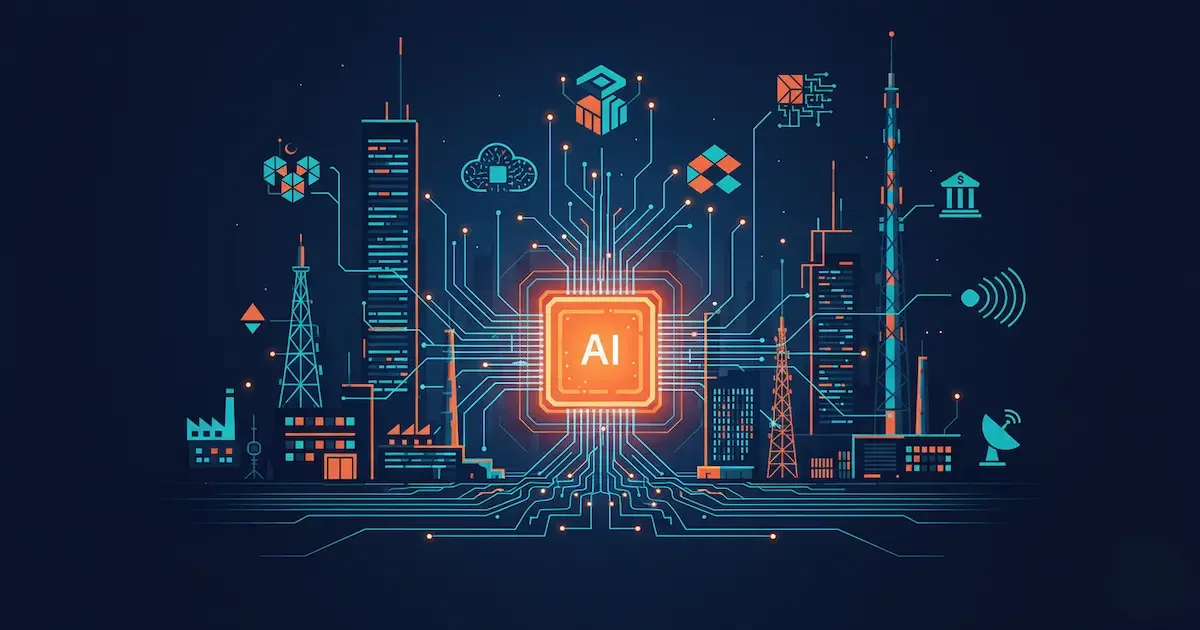Here’s a straight-up truth about Indian industry in 2025: AI has moved from “nice-to-have” pilot projects to the C-suite’s core playbook. Conglomerates aren’t just dabbling; they’re standing up dedicated AI business units, wiring AI into every workflow, and cutting big-ticket deals with U.S. tech heavyweights to make it real at scale. If you work in India Inc., this isn’t a future trend. It’s Tuesday.
AI’s rise from experiment to strategy is visible in three moves that keep repeating:
build (new AI orgs and platforms), buy (partnerships for talent, chips, and cloud), and embed (use cases tied to revenue and risk). Tata Consultancy Services (TCS), for instance, formalised an AI-focused business unit in 2025 to centralise capabilities and push AI-led services—explicitly signalling that AI is no longer a horizontal tool but a vertical business.
On the “buy” front, the biggest lever is compute and tooling. Reliance’s Jio is teaming up with NVIDIA to stand up AI infrastructure using advanced systems like Grace Hopper and DGX Cloud—think of it as laying India’s AI power grid so every app, from retail to agriculture, can plug in. The plan ties into Jio’s group-wide “Jio Brain” push and aims at making AI access both local and cost-efficient.
IT services majors are building their own AI engines while partnering where it matters. Wipro committed $1 billion for its ai360 programme to upskill people and productise AI across offerings, with Microsoft as a key anchor in the ecosystem. That’s not a press-release flourish; it’s a multi-year capital plan to turn AI from services add-on to services core.
Infosys took a platform route with Topaz, then deepened its alliance with NVIDIA—including launching domain-tuned small language models for banking and IT operations on NVIDIA’s stack. Translation: not just generic chatbots, but enterprise-grade models tuned for regulated, process-heavy work.
HCLTech went two ways at once: software and silicon. It integrated NVIDIA AI Enterprise and Omniverse into its GenAI and “physical AI” solutions to accelerate code-to-production cycles, and separately signed a multi-year partnership with OpenAI—becoming one of OpenAI’s first strategic service partners—to take enterprise adoption beyond pilots. That combination of model access plus deployment muscle is exactly what large customers (banks, manufacturers, telcos) keep asking for.
A macro tailwind is also at play: New Delhi’s IndiaAI Mission. With a ₹10,371 crore outlay and a plan for public AI compute (10,000+ GPUs) via PPPs, the policy backdrop finally aligns with industry intent. That doesn’t solve every bottleneck—talent and high-end chips remain tight—but it lowers the friction for big Indian firms to scale responsibly onshore.
So what’s actually changing inside companies?
1. AI is becoming a P&L lever, not an IT experiment. Leaders aren’t asking “What can GenAI do?” but “Which revenue line or cost bucket moves next quarter if we ship this?” That’s why you see domain SLMs (Infosys), AI agents in delivery (TCS), and AI-enhanced engineering twins (HCLTech/Omniverse).
2. Ecosystem beats ego. The winners are pairing internal Centres of Excellence with external cloud, model, and chip partners—NVIDIA for acceleration, Microsoft/Azure OpenAI for enterprise-safe tooling, and OpenAI for front-edge models—so they can move faster without reinventing physics.
3. Infra is national, apps are local. Building data centres and AI fabs is a long game (and yes, expensive), but the near-term wins are local-language models, compliance-aware copilots, and AI-assisted ops. Reliance–NVIDIA’s Hindi-model signal and the Jamnagar data-centre build-out are exactly the kind of moves that localise AI’s benefits for India’s scale and diversity.
Where to focus if you’re a CXO in India:
· Tie AI to “time-to-impact.” Pick 3–5 use cases with measurable outcomes: sales productivity, claims STP, fraud triage, demand forecasting. Ship in 90 days, iterate every 30.
· Buy don’t build (where it’s commodity). Foundation models, acceleration stacks, and MLOps scaffolding are a partnership game. Build your moat in data, workflows, and governance.
· Treat data like a regulated asset. Create clear data contracts, retention rules, and human-in-the-loop checkpoints. It’s cheaper than remediating a bad model in production.
· Upskill at scale, not in pockets. Wipro’s $1B bet is a reminder: if your people can’t wield the tools, your strategy is PowerPoint.
Indian conglomerates aren’t waiting for a perfect AI moment. They’re building the rails with global partners, standing up units with delivery authority, and chasing pragmatic wins. The companies that treat AI like electricity—pervasive, audited, and priced against value—will own the next decade of Indian industry. The rest will be buying catch-up licenses.
